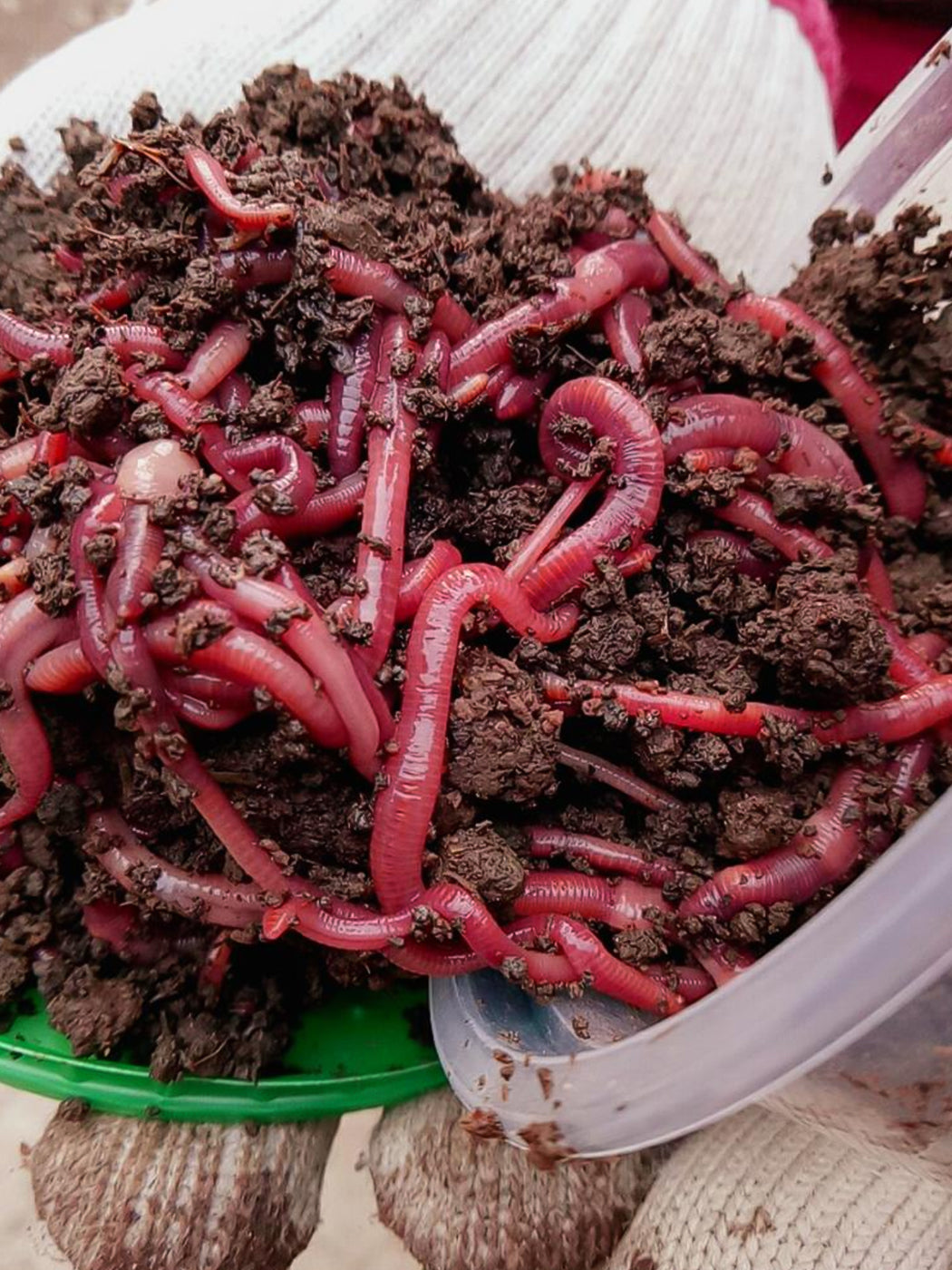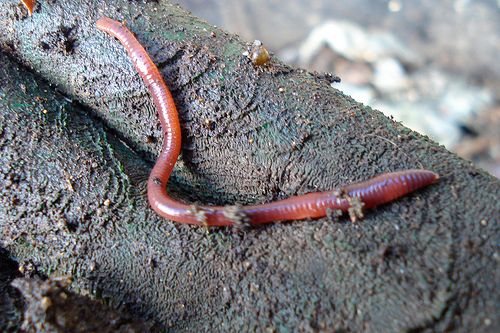Take Care of Your Lawn with the Best Products from Lake Hickory Bait
Take Care of Your Lawn with the Best Products from Lake Hickory Bait
Blog Article
Why Red Wigglers Are the Ultimate Ally for Your Garden's Wellness
The assimilation of red wigglers right into garden administration practices offers an engaging instance for boosting soil health and overall yard vigor. These organisms are not merely composters; they are critical in creating nutrient-rich castings that significantly improve soil structure and advertise a thriving ecosystem. Additionally, their duty in cultivating valuable microbial task can bring about natural insect control and improved plant resilience. Nonetheless, understanding the full extent of their benefits and exactly how to successfully incorporate them right into your gardening approach warrants even more expedition. What certain practices can maximize their potential?
Benefits of Red Wigglers
Red wigglers, a preferred selection among composting fanatics, provide countless advantages for garden health and wellness. These earthworms, clinically called Eisenia fetida, play an important duty in enhancing dirt high quality. By eating natural matter, red wigglers break down waste into nutrient-rich castings, which serve as an excellent all-natural fertilizer. This procedure not only enhances the soil yet also improves its framework, promoting much better aeration and drainage.
In addition, red wigglers add to raised microbial activity within the soil. The spreadings they produce are brimming with beneficial bacteria that assist decay natural products and release vital nutrients, making them easily available for plant uptake. This organic activity cultivates a successful ecosystem, which is vital for plant wellness and durability.
Additionally, red wigglers aid in wetness retention within the soil, decreasing the frequency of watering demands. Their tunneling activity aerates the soil, producing pathways for water and air to penetrate deeper layers, hence enhancing origin development.

Just How to Use Red Wigglers
Utilizing red wigglers in your horticulture methods can considerably enhance dirt health and efficiency. To effectively incorporate these beneficial worms, start by setting up a vermicomposting system. This can be performed in an assigned container, which must be well-ventilated and contain a bed linens product such as shredded newspaper, coconut coir, or aged compost.
Present the red wigglers into this atmosphere, ensuring they have accessibility to a well balanced diet plan of cooking area scraps like veggie peels, coffee premises, and crushed eggshells. Prevent citrus, milk, and meat, as these can attract parasites and cause odor issues.
(Lake Rhodhiss Bait)Maintain ideal problems by keeping the moisture degree constant-- damp but not soggy-- and making sure the temperature level ranges between 55 ° F and 77 ° F. Red Wiggler Express. Screen the bin on a regular basis, including more bed linens and food as needed
As soon as your worms have actually refined the organic material, you will certainly observe an abundant, dark mixture building up at the base of the bin. This can be made use of to enhance the dirt in your garden beds or potted plants, thus developing a flourishing ecological community that advertises healthy and balanced plant development. Red wigglers genuinely function as a lasting resource for any kind of horticulture fanatic.
Nutrient-Rich Castings Explained
Vermicomposting returns an exceptional product called worm spreadings, which are packed with crucial nutrients valuable for plant development. These castings are the result of the digestion of raw material by red wigglers, transforming waste right into a nutrient-dense fertilizer. Rich in nitrogen, phosphorus, potassium, calcium, and magnesium, worm spreadings offer a well balanced source of nutrition that sustains the overall health of plants.
The nutrient profile of worm castings transcends to that of conventional compost. This is mainly due to the microbial activity that takes place throughout the digestion process, which boosts the bioavailability of nutrients. Moreover, castings have valuable microorganisms that advertise soil wellness and plant vitality.
Furthermore, worm spreadings are identified by their slow-release residential or commercial properties, making sure that nutrients are available to plants over an extensive duration. This progressive release lessens the danger of nutrient leaching, making it an eco-friendly selection for garden enthusiasts.
Integrating worm castings right into your gardening regimen not only enhances the soil yet additionally promotes sustainable methods, ultimately resulting in much healthier plants and a much more effective yard.
Enhancing Dirt Structure
The incorporation of worm castings not only improves nutrition accessibility however also significantly boosts dirt framework. Worm spreadings, generated by red wigglers, add to a healthy soil environment via their unique structure of raw material and advantageous microbes. When blended right into yard soil, these castings improve oygenation, allowing for much better root penetration and development. The permeable nature of worm spreadings develops rooms that assist in the motion of air and water, which is crucial for sustaining plant wellness.
Furthermore, worm castings assist to aggregate soil bits, creating globs that enhance drainage and decrease soil compaction. This aggregation sustains the retention of dampness while avoiding waterlogging, developing an optimal environment for plant origins. Healthy and balanced soil framework likewise advertises the spreading of advantageous microorganisms and fungi, further improving the dirt's capability to support plant.
In addition, the high natural material of worm castings acts as a slow-release source of nutrients, guaranteeing that plants get important components with time instead than in a fast, potentially damaging burst. Thus, including worm castings into your horticulture practice not just improves the dirt nutritionally but likewise cultivates a robust and durable dirt structure, crucial for prospering plants.
(Red Wiggler Express)
Drawing In Beneficial Organisms
Drawing in beneficial microorganisms is vital for keeping a dynamic and productive garden environment - learn this here now Red Wiggler Express. These organisms, including pollinators, predative pests, and microorganisms, contribute dramatically to soil health and wellness, pest control, and plant growth. Red wigglers, or Eisenia fetida, play a critical role in this procedure by boosting the total biodiversity of the garden
To draw in helpful organisms, garden enthusiasts must focus on developing a friendly environment. This can be achieved by incorporating varied plant varieties that bloom at various times, ensuring a continuous supply of nectar and pollen. Furthermore, offering habitats such as native wildflowers, bushes, or insect resorts can encourage useful pests to thrive.

Conclusion
To conclude, the combination of red wigglers right into gardening methods considerably improves dirt health and promotes lasting environments. Their capacity to transform natural waste into nutrient-rich spreadings boosts dirt structure, aeration, and wetness retention, fostering a conducive atmosphere for plant development. Moreover, red wigglers bring in beneficial organisms that add to natural parasite control and overall garden vigor. Accepting the use of red wigglers represents a proactive technique to cultivating a flourishing and resistant garden community.
Report this page